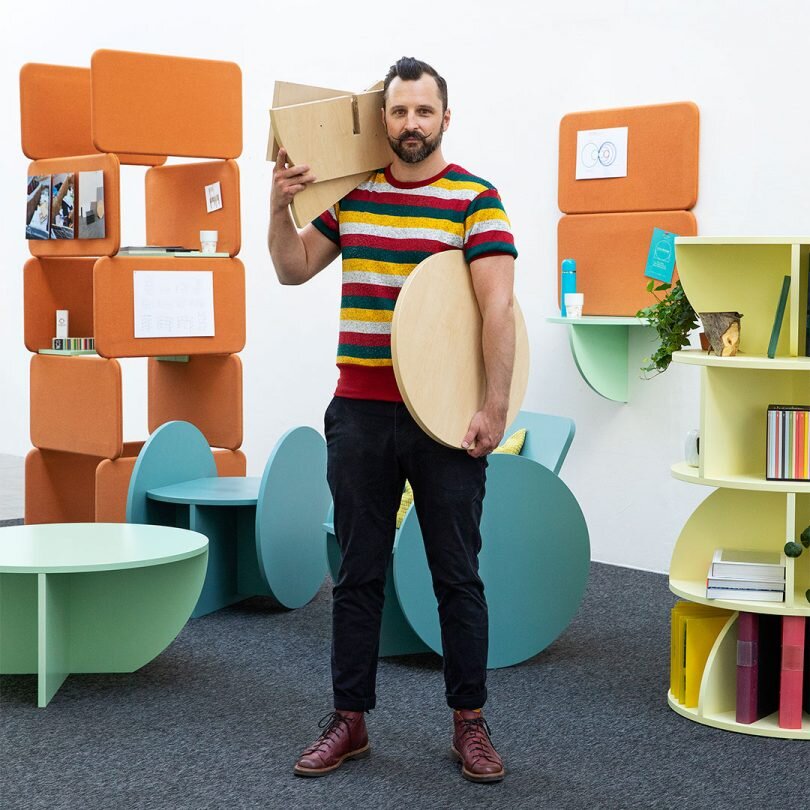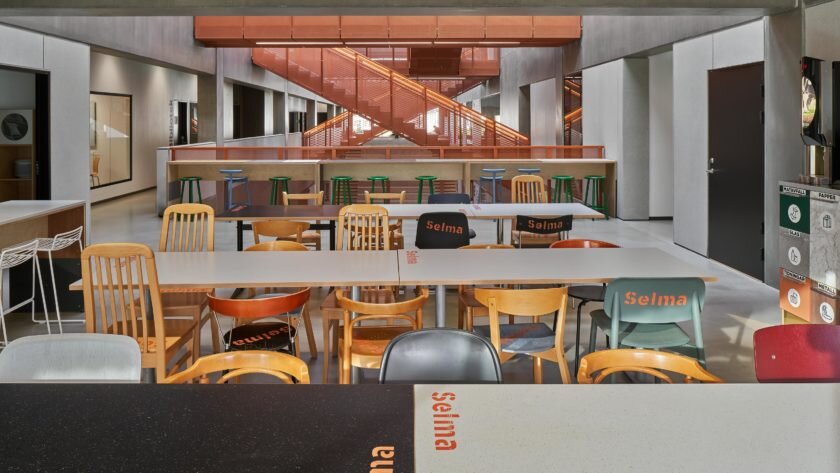One of the concerns I often hear is that upcycling has a limited capacity and can only be populated by designer makers making one off pieces. Our industry demands scalability so I was delighted to hear that this is exactly the area in which Daniel is working and that there is clear support from the Swedish government and other experts within our shared expertise.
In his Masters project he worked with the vast amount of materials being made available through the fit out of both public and private commercial buildings.
‘There is a lot of material being wasted in vain within our field when it comes to used, old or broken furniture and interior products. However, things are now slowly happening, as more actors think holistically, sustainable, and circular. More needs to be done thought and the future role of the furniture/product designer and interior architect needs to be updated and evolved in some respects, I think. The industry, in Sweden, is slowly changing, through a handful of leading companies, but they often lack the creative and aesthetic sense in problem solving when it comes to taking even further steps in this and that’s where the likes of us designers come in. We all need to work more together. Designers, architects, the industry, clients, consumers, and people in general to shift to a more circular way of thinking in most of our dealings in life.”
Svahn goes on to reference leading Swedish companies and initiatives involved in upcycling and reconditioning used or “old” office furniture and sees it as a field that is be growing rapidly with the increasing demand for sustainable alternatives.
White Architects, one of the largest architectural firms with multiple offices around Sweden, are the creators of the reuse-themed Selma Centre in Gothenburg. In addition, contributing to the creation of CC Build, Centre for Circular Building and Construction1 , they are big enough to be advocates for change and thus have the muscles to so. In close collaboration and interplay with the municipality, their Selma Centre project, developed a positive change in legislation and guidelines for how reuse and upcycling may be used in the public sector.
Malmö Upcycling Service (M.U.S) Seeing industrial waste as a material resource for new products that can be sold locally, M.U.S was founded in 2019 by MFA Industrial Designers Anna Gudmundsdottir (1987) and Emilia Borgvall (1990). With their work and collaborations, they aim to rethink design processes and to question the designer’s role and democratic production methods. The concept of using recycled material as a base for small scale production is key and generates highly personal and unique products.
One of the main initiatives is the collaborative hub that is 100Gruppen, the 100 Group, a government funded initiative consisting of a mixed group of devoted companies, organisations, and stakeholders within the field of interior design. The members range from interior architects and architecture firms, through manufacturers, distributors, and retailers, to property developers, renovation companies and even government institutions. They all share the same common goal: to reach 100% circular and sustainable interiors by developing new business models and tools for it.
Svahn concludes that “the main opportunities lie in the positive effects on our climate and the economy, with potential and emerging new economic systems that may generate businesses and profit with less stress on nature in the long run. Whether we deal with pure upcycling, recycling, and material reuse, or in designing new and smart products adapted to a circular system, there are great opportunities for designers. I believe this is the future of sustainable product design and development and a new way of thinking. A new way of designing. A new paradigm.”
Daniel and I are working on a seminar for any of you interested in joining our conversation, let me know.



